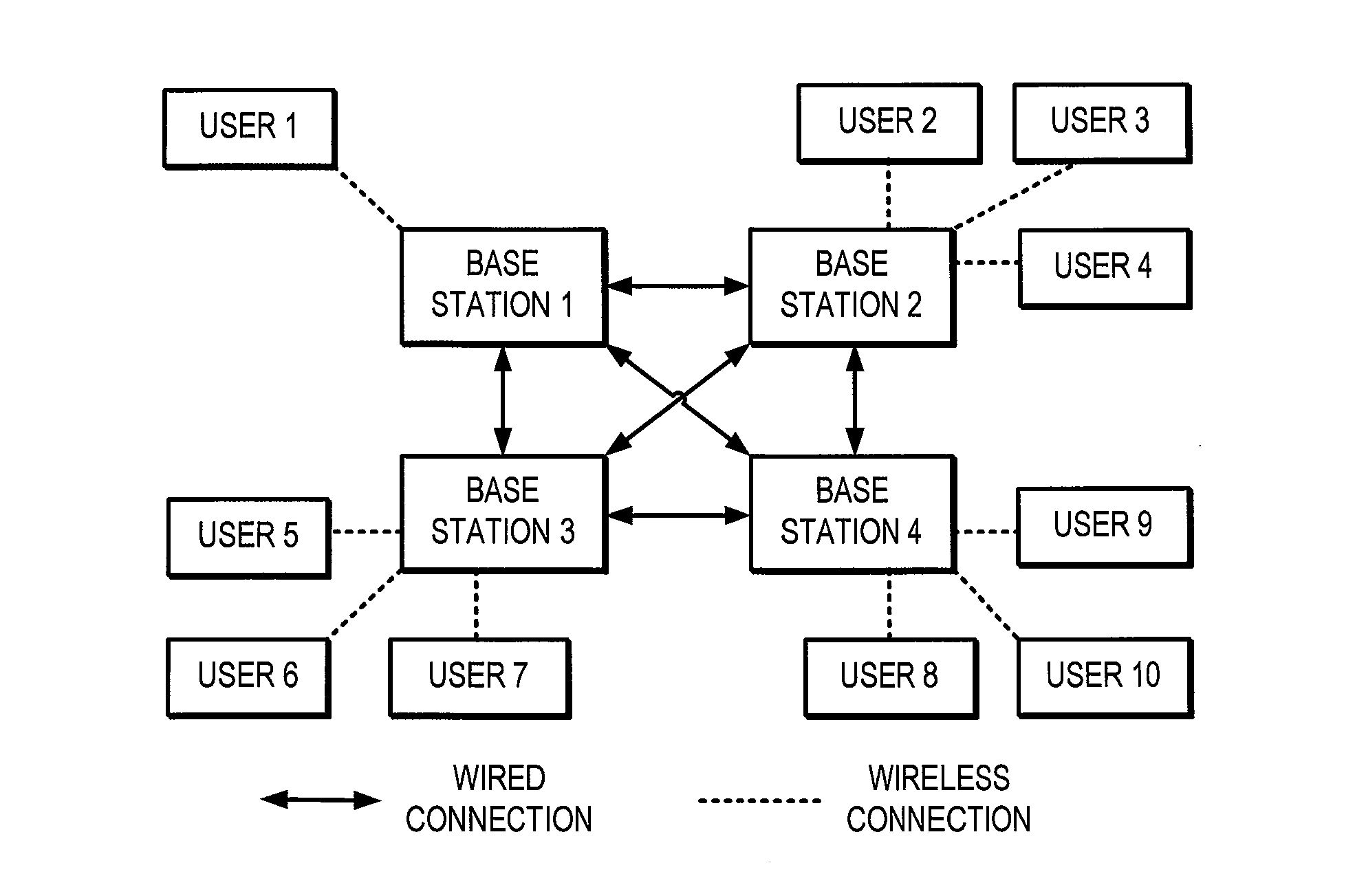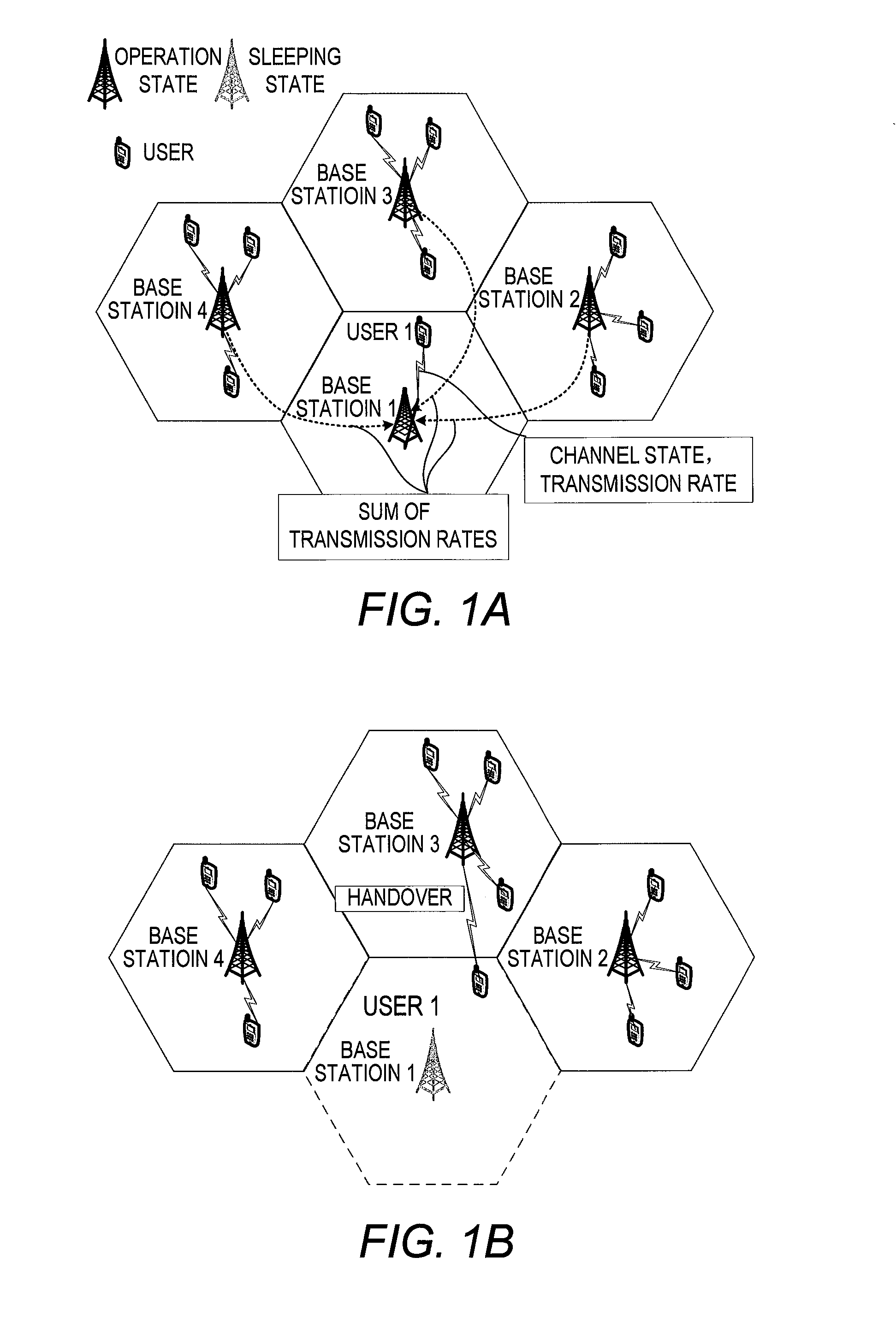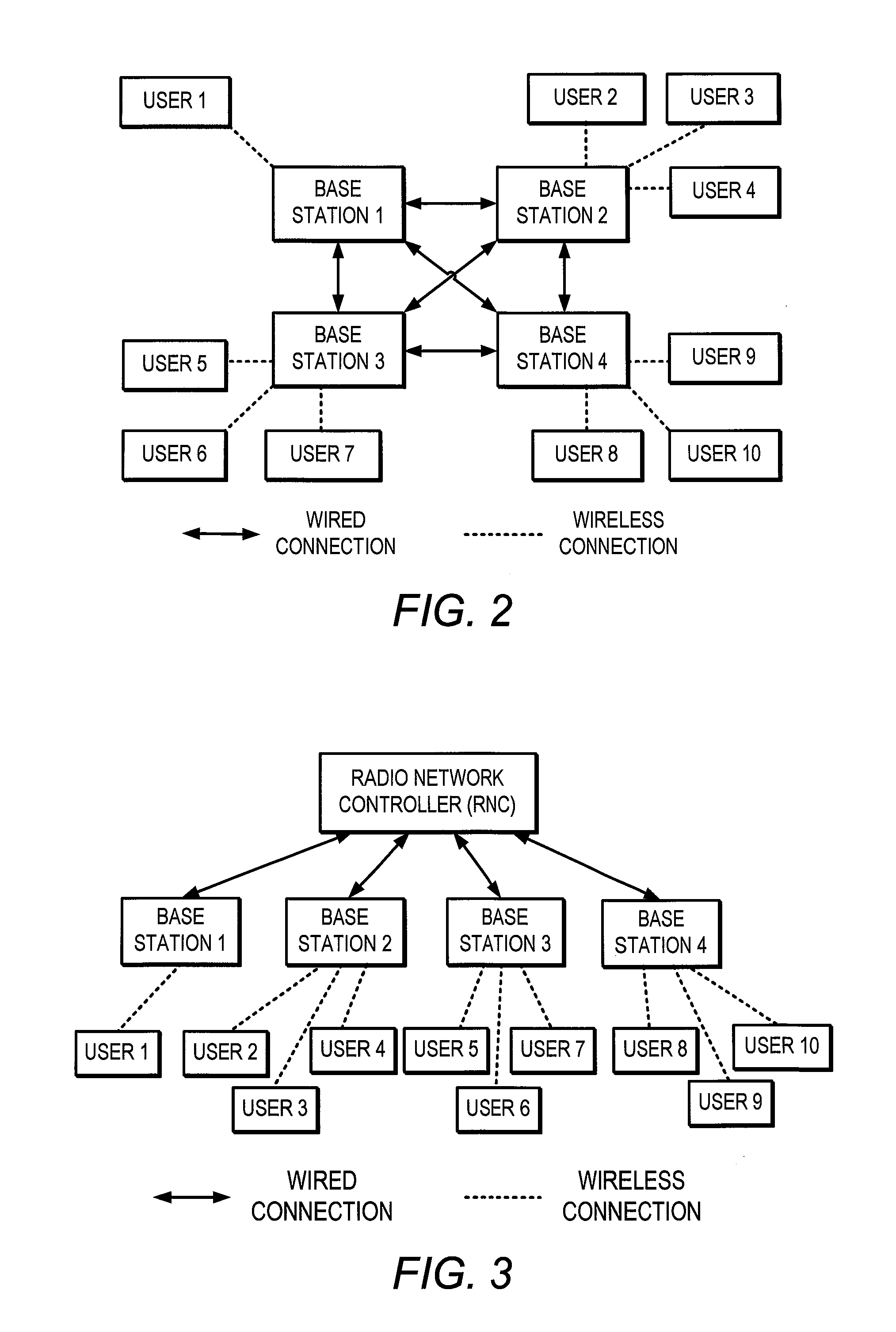Base station in cellular network system and sleep control method for base station
- Summary
- Abstract
- Description
- Claims
- Application Information
AI Technical Summary
Benefits of technology
Problems solved by technology
Method used
Image
Examples
Embodiment Construction
[0048]The following contents relating to the present invention may be clarified from the following explanation of embodiments.
[0049]Firstly, the embodiment of the present invention proposes a low complexity of overall base station sleep control method. The base station sleep control requires close cooperation between neighboring base stations, since after the base station sleeps, neighboring base stations need to fill up coverage blanks of the sleeping base station, and the base station sleep control further needs a user handover process. In the base station sleep control method proposed in the present invention, when a certain base station is in low traffic, although users in the cell still exist, the base station can go to sleep in order to enhance energy saving effect or reduce interference among cells. The base station to be going to sleep should not only consider its cell's load condition before sleeping, but also should know load condition of neighboring base stations to enabl...
PUM
 Login to View More
Login to View More Abstract
Description
Claims
Application Information
 Login to View More
Login to View More - R&D
- Intellectual Property
- Life Sciences
- Materials
- Tech Scout
- Unparalleled Data Quality
- Higher Quality Content
- 60% Fewer Hallucinations
Browse by: Latest US Patents, China's latest patents, Technical Efficacy Thesaurus, Application Domain, Technology Topic, Popular Technical Reports.
© 2025 PatSnap. All rights reserved.Legal|Privacy policy|Modern Slavery Act Transparency Statement|Sitemap|About US| Contact US: help@patsnap.com



